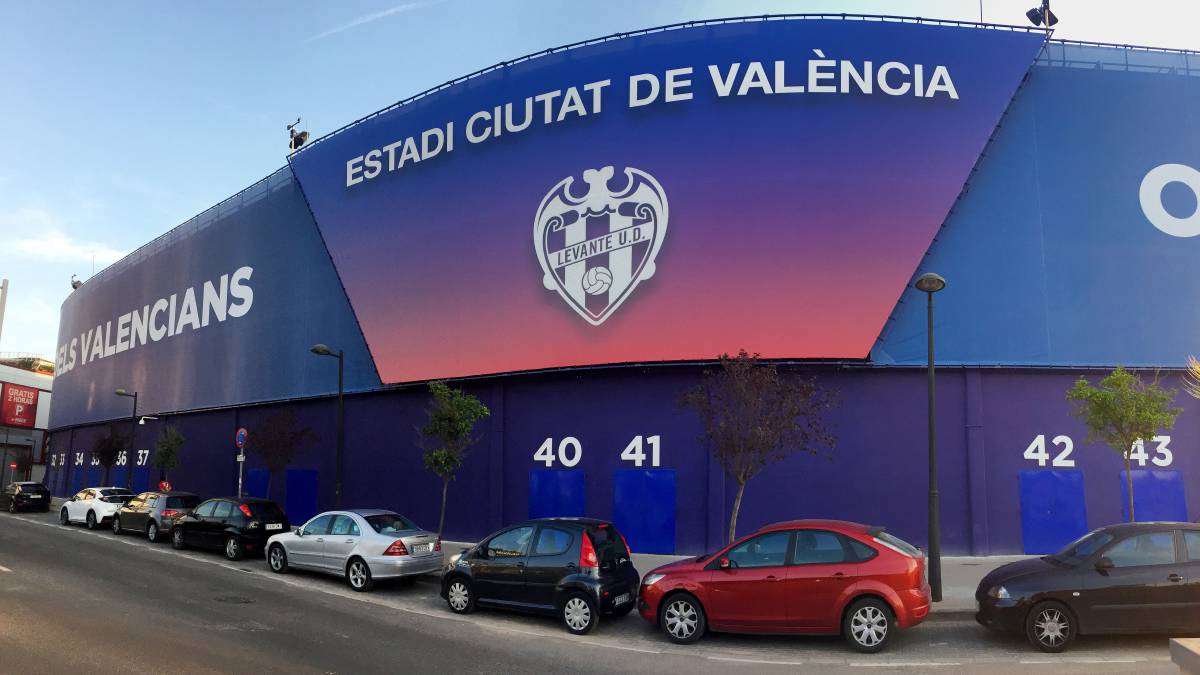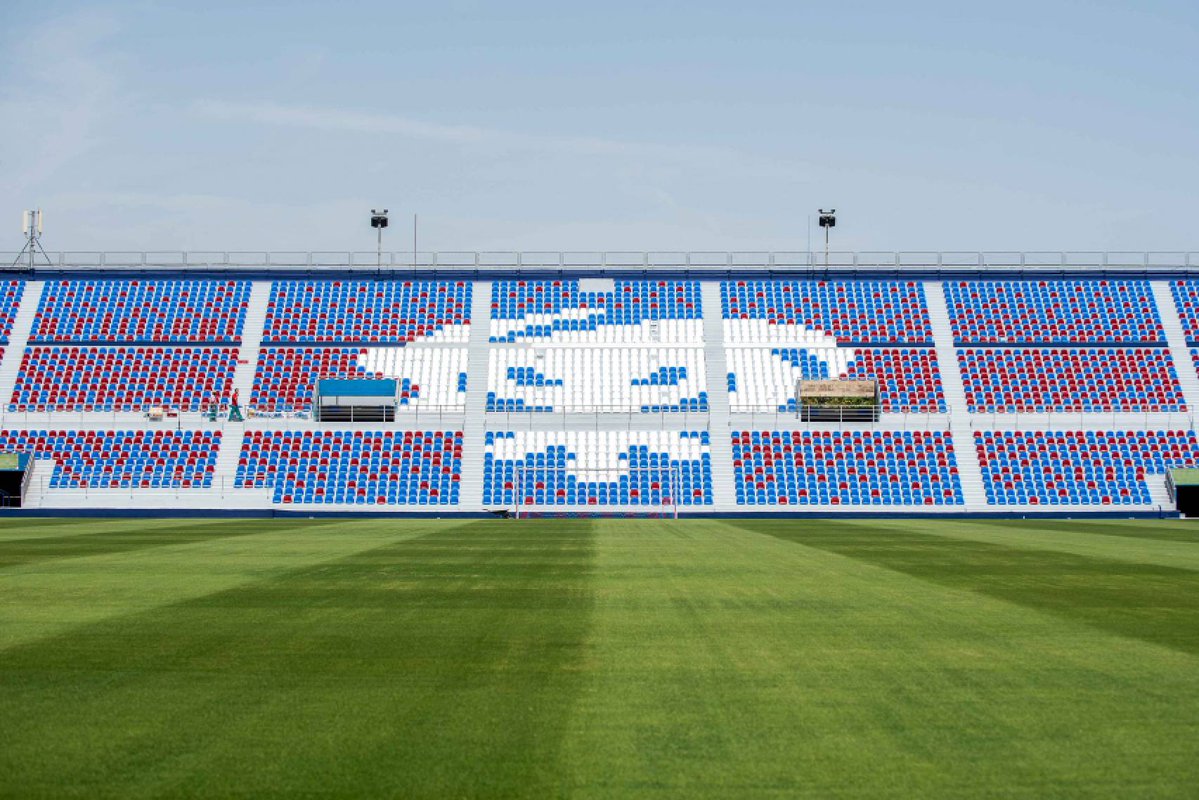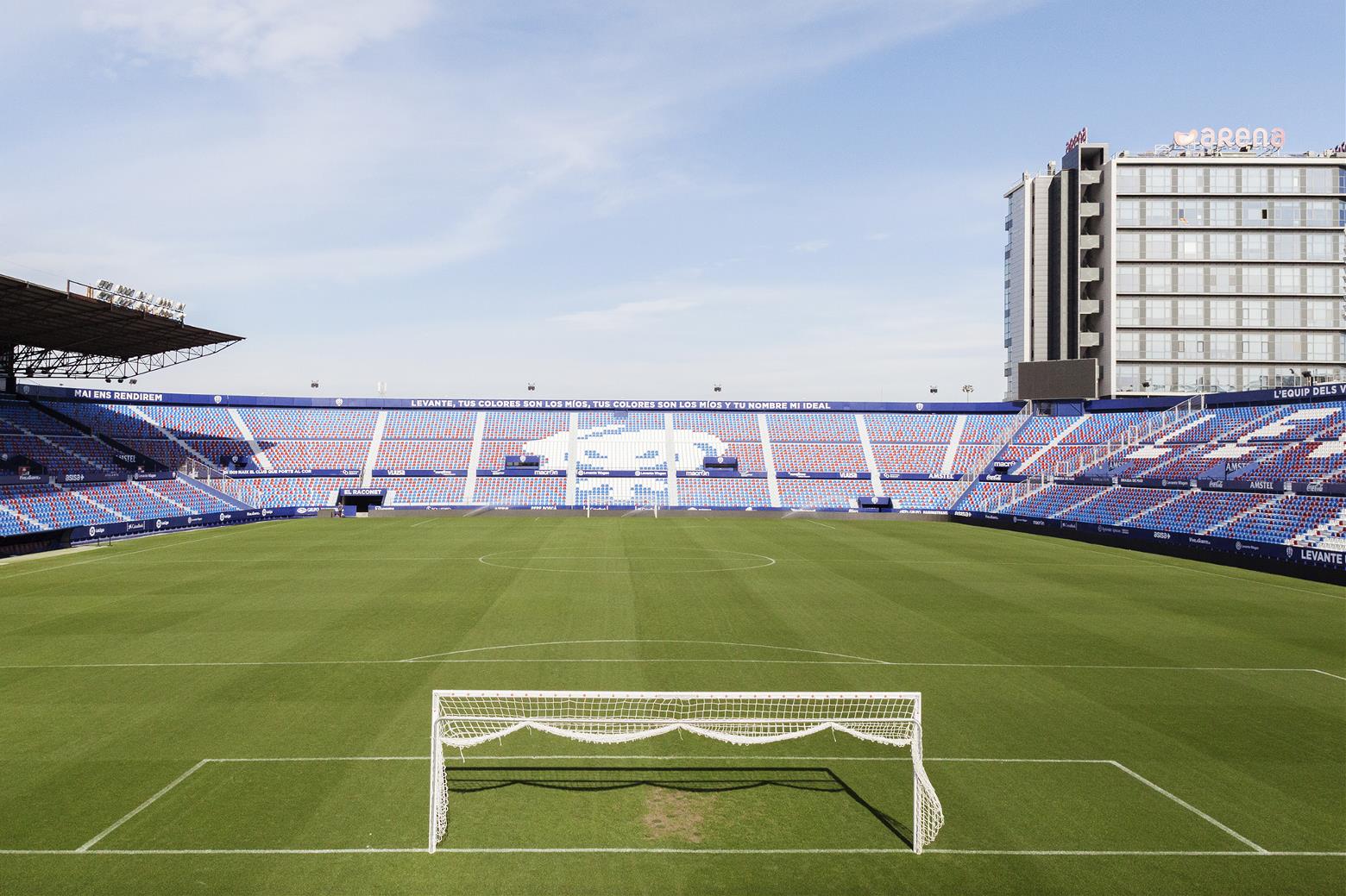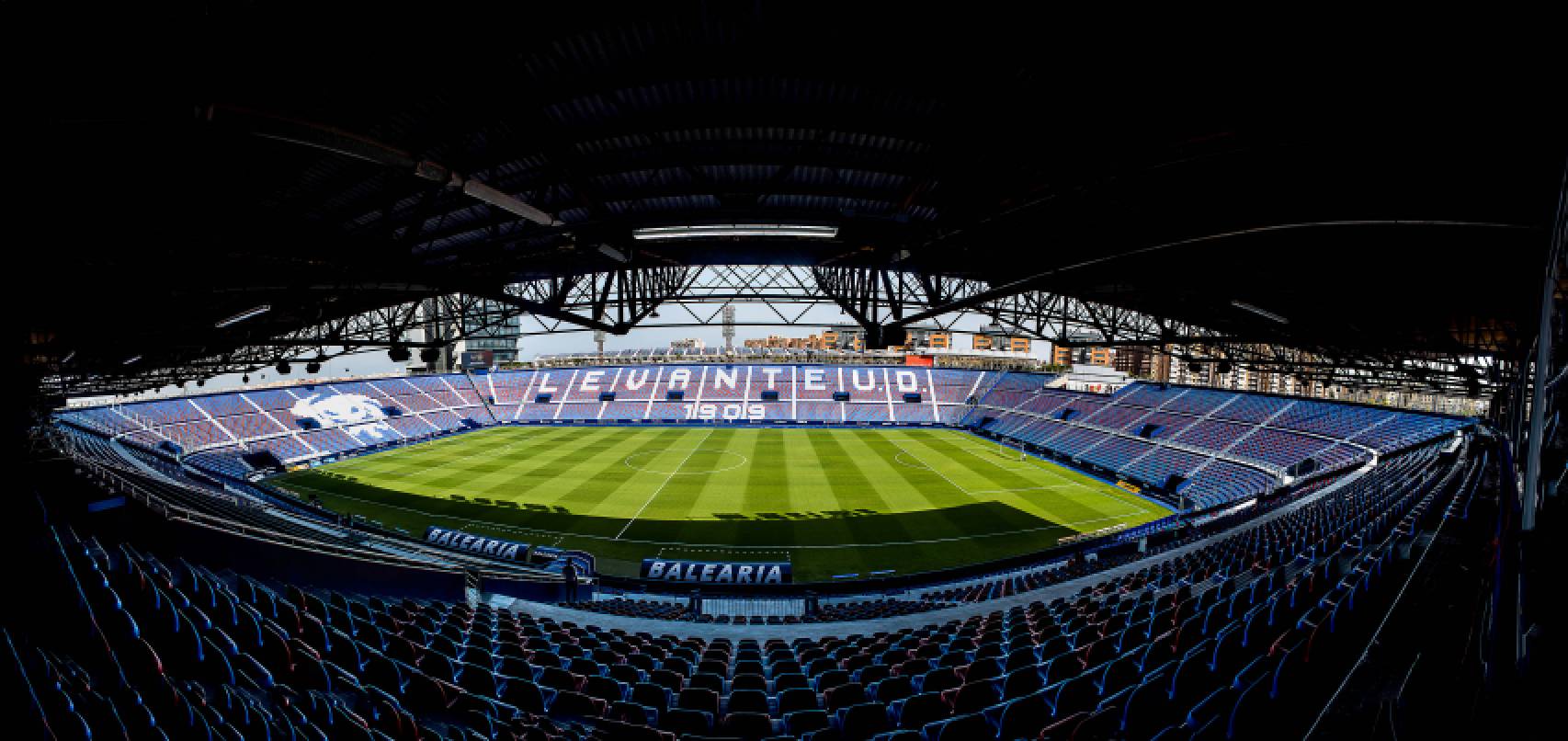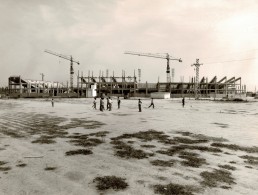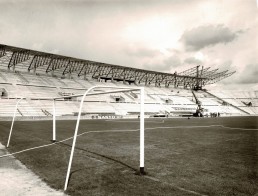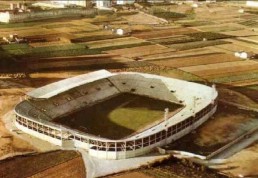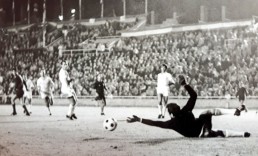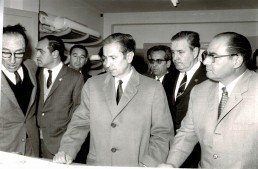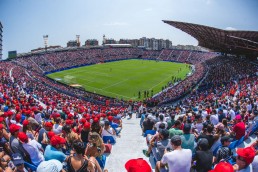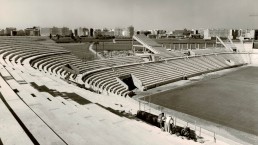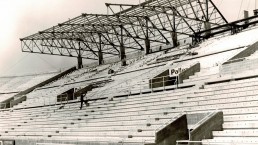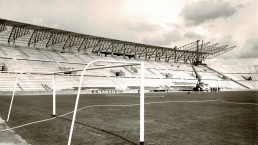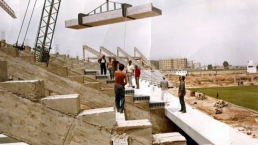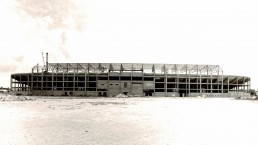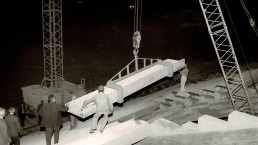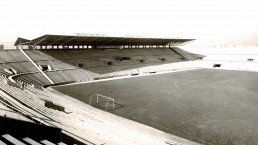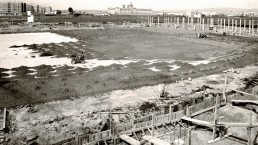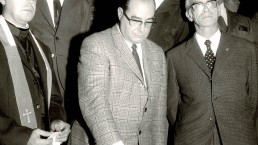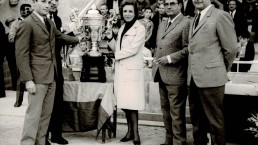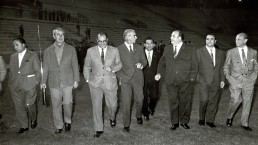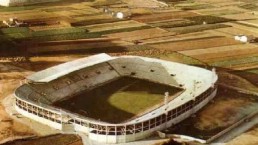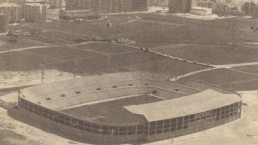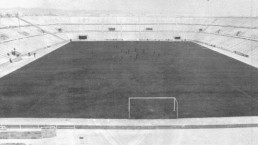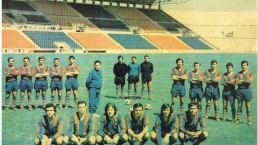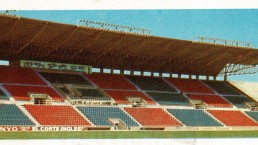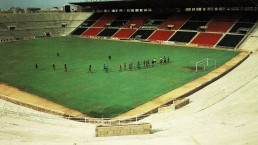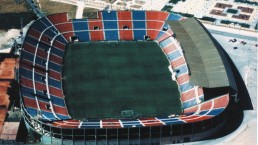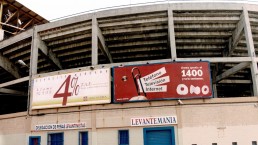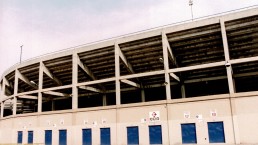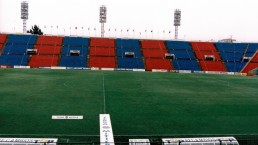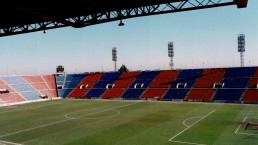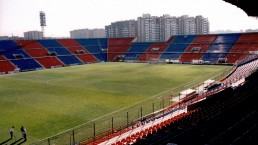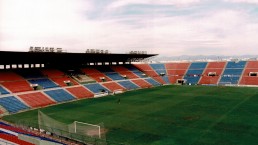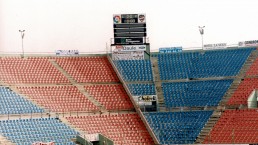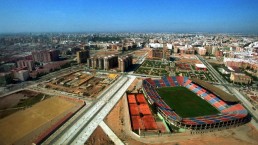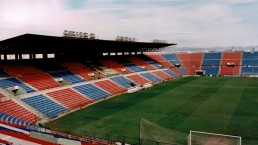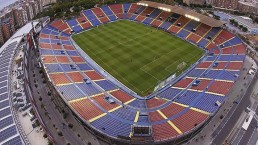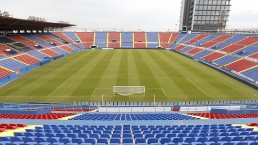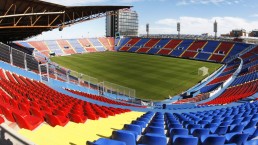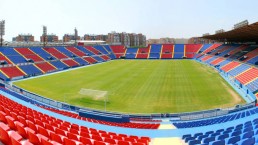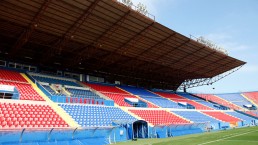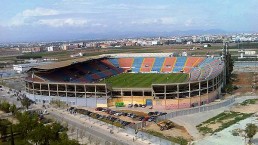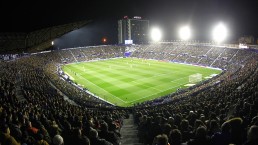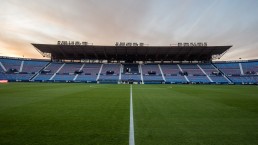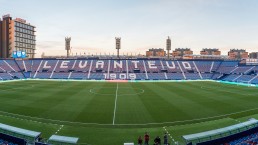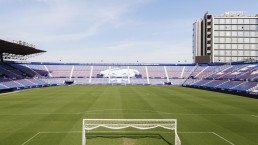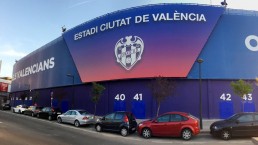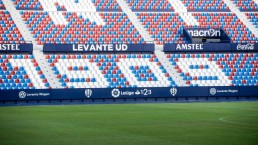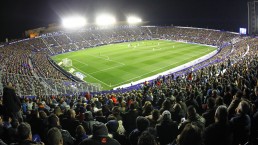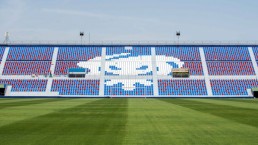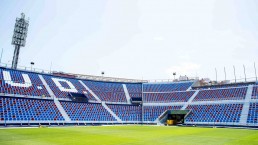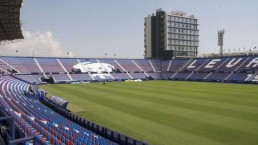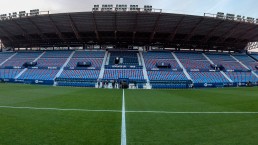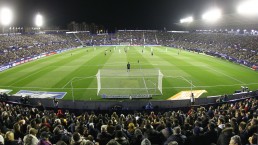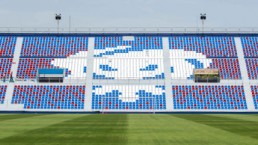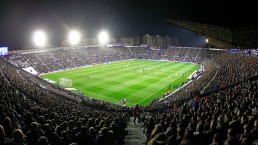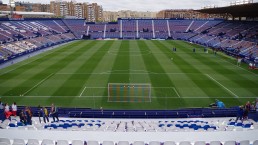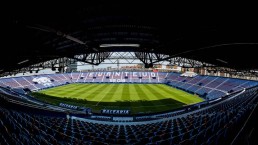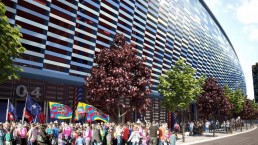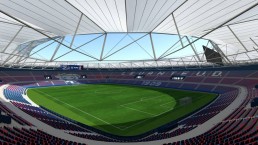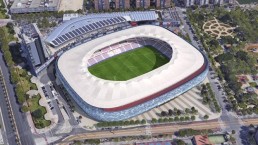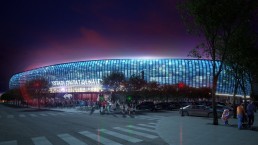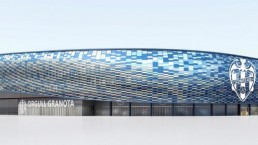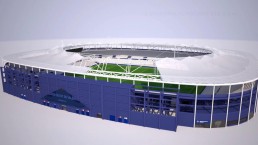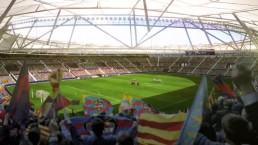Its History
A picture of the construction of the current main façade of the Ciutat de València.
Since the end of the 1950s, there has been clear support for the construction of a new stadium to replace the old Vallejo stadium in the Levante area. Its execution was not easy because it was necessary to combine the strong economic impact of a sidereal operation with the urban development of the city of Valencia. It was the starting point of a period full of uncertainty and upheaval regarding the execution of the project, which also led to a conflict of interests between the main leaders of Levante during that period. The construction of the new pitch dragged on. In February 1962, Blas Escrig signed a contract with José Navarro, who was the successor to Antonio Román’s first presidency, for the construction of a new stadium with a capacity for fifteen thousand spectators. According to the signed document, the mentioned stadium was to be built by December 1963, although in the end the deadlines were not met and the established margins were extended until 31 March 1964. In June 1964 the original contract was modified. In 1967 the problem worsened. The definitive construction of the stadium coincided with the return to the presidency of Antonio Román, who was preparing to develop his second period at the head of the institution.
Fotografía de la construcción del voladizo de la Tribuna del Estadio Antonio Román.
On 31 May 1968, at the extraordinary general assembly of Levante’s delegates, held at the premises of the Valencia Football Federation in Avenida Barón de Cárcer, the leader reported on the operation of the long-awaited new stadium. Román informed the delegates that the Vallejo land had been sold and that an area had been acquired for the construction of the long-awaited pitch, the hinge on which the club’s battered economy, hit even harder by the club’s relegation to the Third Division after a not too distant stay in the First Division. Huge posters announced to the whole of sporting Valencia the location of the space chosen to take over from the old and loyal Vallejo. The president announced that the prestigious architect Juan José Estellés would be in charge of the raising of this aspiration.
Vista aérea del Estadio sin construcciones alrededor.
Levante, with the connivance of the president of the Diputación de Valencia, acquired a large plot of land located in the Orriols neighbourhood in the municipality of Valencia. The new pitch was designed according to the parameters of the most modern and functional facilities dedicated to the discipline of football. From a constructive perspective, it had three oval rings with a capacity for thirty thousand people. However, the original project foresaw the possibility of an extension that would allow a capacity of around fifty thousand fans to be reached. The venue, which would have artificial lighting to enable matches to be played at night, would have a fully covered grandstand while the rest of the facility would be open-air. The design envisaged the construction of all types of services including press and television booths, a media room for pre- and post-match interviews, as well as a social headquarters that would allow the club’s offices to be located in the very heart of the complex. The scenario proposed a playing field one hundred and seven metres long and seventy metres wide, extending over an area of 40,000 square metres.
Levante and Valencia opened the Granota ground in September 1969.
The Estadio Ciudad de Valencia was inaugurated on 9 September 1969, on a symbolic date linked to the birth of the institution, with the name Estadio Antonio Román. The event attracted the attention of all the political segments of late Francoist Valencia. However, the celebrations began earlier. On Thursday, 4 September, a brotherhood dinner was held, presided over by the city’s main sporting authorities and the members of the board of directors of Levante. Juan Antonio Samaranch, National Sports Delegate, announced that he would modify his agenda to be present at the inauguration of the facility on the evening of Tuesday 9th September. On Friday, September 5th, the new Levante flag was blessed in the chapel of the Basilica of the Patron Saint of Valencia.
Juan Antonio Samaranch at the inauguration of the Stadium.
Juan Antonio Samaranch fue el encargado de pulsar el botón que iluminó de facto las torres del nuevo coliseo granota mientras sobre el césped estaban dispuestas las distintas secciones de la institución con sus respectivas banderas. Antonio Román impuso a Samaranch la medalla de oro de la sociedad levantinista. Matías Prats ejerció de cicerone del evento mientras que Elisa Bau Carpi realizó el saque de honor convertida en la primera madrina del club. Tras el protocolo aparecieron sobre el terreno de juego los jugadores del Valencia y Levante. Se mantenía incólume una tradición que unía a ambos clubes desde la noche de los tiempos. El Valencia fue el team invitado en la inauguración del Campo de La Cruz en septiembre de 1922 y el Levante correspondió en el estreno de Mestalla en 1923. Mut, Martín, Campos, Blasco, Suárez, Ruiz, García Soriano, José, Navarro, Genaro y Fuertes conformaron la primera alineación azulgrana sobre el tapiz verde del nuevo edificio. Adelardo, Sol, Aníbal, Antón, Roberto, Vilar, Fuertes, Guillot, Valdo y Poli opusieron resistencia. El triunfo fue para la escuadra de Mestalla, aunque fue Genaro el protagonista del partido al conseguir perforar la meta de Adelardo, si bien el colegiado de la contienda denegó la validez del que hubiera sido el primer gol del Estadio Antonio Román.
Panorámica de El Estadio Ciutat de València en un derbi.
The stadium has had several different names since its inception. Levante debuted at the Estadio Antonio Román as a tenant in the Third Division in the 1969-1970 season, during the seventies and eighties it was called Nou Estadi and since the late nineties it has been renamed Ciutat de València in an attempt to link Levante to its immediate surroundings, a measure that Manuel Grau Torralba tried to put into practice. On the pitch of the Granota coliseum, matches have been played at all levels of professional football. In the 2004-2005 season, it made its debut as a first division stadium with a match between Levante and Racing Santander (3-1). On 3 September 2004, it hosted a friendly match between the Spanish senior national team and Scotland, which was cancelled due to heavy rain in Valencia. It was the last preparation match for the national team coached by Luis Aragonés before the start of the qualifiers for the World Cup in Germany. The national team returned to Orriols ten years later in a qualifier for the 2016 European Championships. On that day, Spain crushed Macedonia (5-1). Before that, in September 2012, a match against Helsingborg marked the start of an exciting projection into Old Europe through the Europa League.
